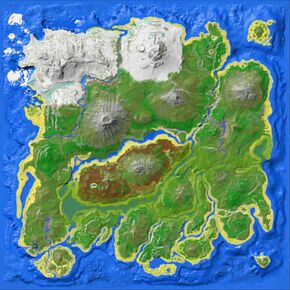

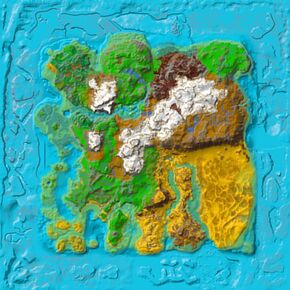



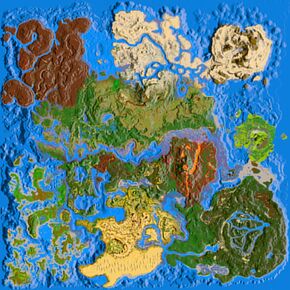


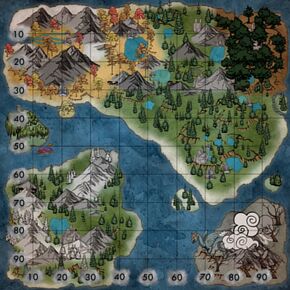
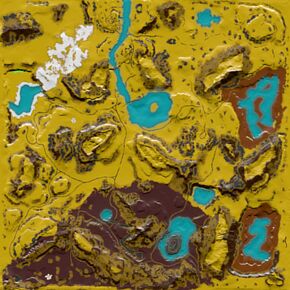

cheat summon Dimorph_Character_BP_Ccheat SpawnDino "Blueprint'/Game/PrimalEarth/Dinos/Dimorphodon/Dimorph_Character_BP.Dimorph_Character_BP'" 500 0 0 35Variant Aberrant Dimorphodon
cheat summon Dimorph_Character_BP_Aberrant_Ccheat SpawnDino "Blueprint'/Game/PrimalEarth/Dinos/Dimorphodon/Dimorph_Character_BP_Aberrant.Dimorph_Character_BP_Aberrant'" 500 0 0 35Variant Corrupted Dimorphodon
cheat summon Dimorph_Character_BP_Corrupt_Ccheat SpawnDino "Blueprint'/Game/Extinction/Dinos/Corrupt/Dimorphodon/Dimorph_Character_BP_Corrupt.Dimorph_Character_BP_Corrupt'" 500 0 0 35Variant Dimorphodon (Retrieve)
cheat summon Dimorph_Character_BP_Aggressive_Retrieve_Ccheat SpawnDino "Blueprint'/Game/Genesis/Dinos/MissionVariants/Retrieve/Volcanic/Dimorph_Character_BP_Aggressive_Retrieve.Dimorph_Character_BP_Aggressive_Retrieve'" 500 0 0 35Variant Dimorphodon (Gauntlet2)
cheat summon Dimorph_Character_BP_STA_Ccheat SpawnDino "Blueprint'/Game/Genesis2/Missions/ModularMission/Gauntlet2/STA/Dinos/Dimorph_Character_BP_STA.Dimorph_Character_BP_STA'" 500 0 0 35Variant VR Dimorphodon (Gauntlet2)
cheat summon Dimorph_Character_BP_TameSTA_Ccheat SpawnDino "Blueprint'/Game/Genesis2/Missions/ModularMission/Gauntlet2/STA/Endless/Tames/Dimorph_Character_BP_TameSTA.Dimorph_Character_BP_TameSTA'" 500 0 0 35








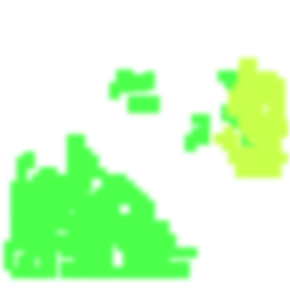



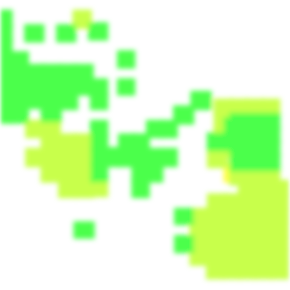





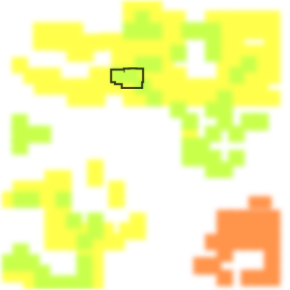

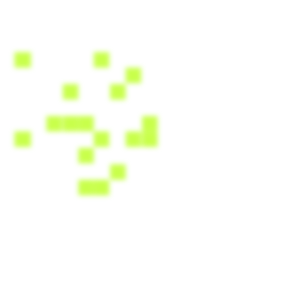



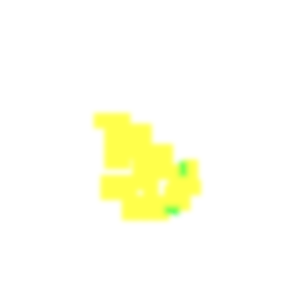

This article is about Dimorphodon, not to be confused with ![]() Dimetrodon
Dimetrodon
The Dimorphodon (die-More-pho-don), also referred to as Dimorph, is one of the creatures in ARK: Survival Evolved, added to the game on the 18th of July, 2015.
This section is intended to be an exact copy of what the survivor Helena Walker, the author of the dossiers, has written. There may be some discrepancies between this text and the in-game creature.
Dimorphodon equesica
TimeEarly Jurassic
DietCarnivore
TemperamentReactive
Dimorphodon equesica is another of the Island's Jekyll-and-Hyde creatures. It is normally passive, sometimes even friendly. When provoked, it becomes very aggressive, even against larger creatures it has no business fighting...often to its own fatal end. Dimorphodon can make short work of smaller opponents, however, due to its large (but lightweight) skull and teeth. Barely over a meter tall, Dimorphodon should be low on the food chain, but its incredible speed and surprisingly strong bite make it fairly dangerous, especially en masse as they tend to attack in groups. A flock of angry or hungry Dimorphodon can take down prey several times their size, so survivors should take care not to hunt near where a flock is gathered.
Dimorphodon is one of the creatures on the Island that is easily domesticated for companionship, but its use in combat is also quite clear: It will hunt in large groups to seek out enemy dino riders directly, harassing them to no end, regardless of the might of their mount!
Dimorphodons tend to stay close in groups of 2-5, however they can rarely be seen alone. They do not attack the player unless they are attacked or an egg is stolen.
They fight using the Raptor tactic (hit and run) and tend to dart towards their target, deliver a strike, then dart away. A small but dangerous flyer, the Dimorphodons are small, fast, and very hard to hit. They are great pets and hunters once tamed, but in the wild, they will attack if provoked and are very hard to hit for players without ranged melee weapons (pikes and spears) and mounts that do not have vertical attacking capabilities.
Tamed Dimorphodons will attack players if directed to attack an animal with a rider, making them excellent human hunters during raids. Watch out for these when walking along rivers and swamps, and some shorelines. In large groups they can become quite a menace, trying to tame one when a large pack is present is very hard so you may want to knock out or kill the others so you can tame the one you want. Once in a group they take a swarm mentality, and due to the hit and run attack style, you'll have one hitting you as soon as the other leaves your vision. Shotguns and large mounts should end your troubles quickly.
The Dimorphodon appears as a small flying reptile with a notably round head. They look similar to bats, and because of this can often be confused with the cave-dwelling Onyc. However there are a few notable differences in appearance, the main one being Dimorphodon's wide color scheme. Whereas similar species tend to have only brown, tan and black colors, Dimorphodon boast striking and bright colors such as reds and greens in addition to more mundane blacks and browns. They can even come in dazzling shades of white, which may seem appropriate given this creature can often be found in the tundras.
This information can be used to alter the Dimorphodon's regions by entering cheat SetTargetDinoColor <ColorRegion> <ColorID> in the cheat console. For instance, cheat SetTargetDinoColor 0 6 would color the Dimorphodon's "body" magenta.
This information can be used to alter the Dimorphodon's regions by entering cheat SetTargetDinoColor <ColorRegion> <ColorID> in the cheat console. For instance, cheat SetTargetDinoColor 0 6 would color the Dimorphodon's "all muted -g" magenta.
![]() Aberrant Dimorphodon is the Aberrant variant of Dimorphodon found in Aberration. It is identical to the normal specie except for its glowing robe. It is tameable and is
Aberrant Dimorphodon is the Aberrant variant of Dimorphodon found in Aberration. It is identical to the normal specie except for its glowing robe. It is tameable and is ![]() Radiation immune.
Radiation immune.
![]() Corrupted Dimorphodon is the Corrupted variant of Dimorphodon found in Extinction. It is identical to the normal specie except for its corrupted robe. It is not tameable and is guided by hive spirit.
Corrupted Dimorphodon is the Corrupted variant of Dimorphodon found in Extinction. It is identical to the normal specie except for its corrupted robe. It is not tameable and is guided by hive spirit.
![]() VR Dimorphodon is the VR variant of Dimorphodon found during some Missions in Genesis: Part 2. It is identical to the normal specie except for its digitized robe. It is not tameable.
VR Dimorphodon is the VR variant of Dimorphodon found during some Missions in Genesis: Part 2. It is identical to the normal specie except for its digitized robe. It is not tameable.
All Variants drop:
| Attribute | Base Value | Level Increase | Taming Bonus | ||
|---|---|---|---|---|---|
| Wild | Tamed | Additive | Multiplicative | ||
| 125 | +25 | +5.4% | 0.07 | ||
| 150 | +15 | +10% | |||
| 150 | +15 | +10% | |||
| 900 | +90 | +10% | |||
| 50 | +1 | +4% | |||
| 23 | +1.15 | +1.7% | 7% | 17.6% | |
| 100% | N/A | +1% | |||
| 100 | +6 | N/A | 0.5 | ||
Type in values of a wild creature to see on which stats it's emphasized. Green values on a high-level creature are very good for breeding. If you have already tamed your creature you can try to recover the breeding stats with an external tool.[1]
The stat-calculator does not work in the mobile-view, see here for alternatives: Apps
Note that after the creature is tamed it gets bonuses on some stats depending on the taming effectiveness. This makes it hard to retrieve the levels on a tamed creature, so this tool is only for wild ones, but gives a first impression, how well the stats are distributed.
| Bite |
|
|---|
Focus on Rider
The Dimorphodon focus on attack the rider of the mount that it is attacking.
For general info about domesticating a wild creature see Taming.
Since the introduction of the bola in May 2016, this weapon is probably the easiest way to KO a Dimorphodon. Once entangled in the bola, walk up to your immobilized prey and shoot it in the head with a tranq dart or tranq arrow. An Electric Prod with 100% melee damage (engram-grade) will instantly knock-out a Level 22 or below Dimorphodon if hit directly in the head. This is another easy method to take one out, especially when you only want to knock out a single Dimorphodon when there are several others nearby.
Hitting a Dimorphodon that is not attacking you poses quite a challenge to any survivor. Trying to shoot the Dimorphodon from the side made many a survivor scratch their heads due to arrows sticking out of the Dino but no apparent result in behavior. In this case, server lag, client lag and an incredibly small hit-box will make the client calculate the shot as a hit and thus rendering the arrow, whereas the server calculates the same shot as miss due to lag/delay. Playing on a server with ~30 Ping @ 30fps its necessary to "lead" the target by about one inch of the screen when using a tranq rifle even on short distance while the Dimorphodon is flying at 90° to your line of sight.
Therefore, clever survivors will make sure the Dimorphodon is angry at the survivor, thus flying straight towards him, which makes landing hits very easy.
Another method is to mount a flyer like a Pteranodon or an Argentavis(preferably low level, low dmg) and fly to the target. Attack it, so it aggroes the Argentavis/Pteranodon. Fly away a few meters, land, unmount and shoot a tranq dart/arrow into its head (since the Dimorphodon is heading for your mount, your position will be slightly off his flight-path. For a head shot, you will have to lead the target again. Just take good measure of the dinos level as one tranq arrow to the head of a flyer deals about 150-250 dmg, add the damage you did with your bird attack and you are likely to kill a low level Dimorphodon.
This method works very well for high level dinos (100+), for lower levels a slingshot might work as well.
After enough torpor is applied, the Dimorphodon will begin to flee. Now is the time to position oneself directly in the wake of his flightpath (behind him) and shoot him from there to bring it finally down.
Sidenote: Having an Argent or Pteranodon at hand also makes for easy prime meat gathering. Survivors with enough foresight will scout for a valuable Dimorphodon, note the position and color, then gather some prime meat and quickly down the Dimorphodon.
When trying to tame low level Dimorphodons, the Beelzebufo and Scorpion tactics will work better as all projectiles deal increased damage to flyers, often killing the low hp Dimorphodons.
If hunting alone, many choose to bring a Beelzebufo as a mount, rather than using a weapon. Using a frog with high melee damage will frequently produce greater success as a leveled frog is able to apply more torpor per hit, reducing odds of the target escaping.
Hunting with a frog has three primary benefits:
The primary drawback to hunting with a frog is that you have one more positional variable to control. Trying to hit a small moving target while jumping can be challenging, and the frog turns much less quickly than the Dimorphodon, allowing them to easily evade by changing direction. A secondary drawback is that a frog with exceedingly high melee damage, while able to take down higher level targets in one or two hits, will frequently kill targets with lower health.
Have patience.
Dimorphodons have a wide-ranging but consistent flight pattern, and will always return to locations they have previously visited. Do not chase while observing; if you wait, it will return. Dimorphodons come to rest on the ground infrequently, and you want to mentally note these locations before alerting the target.
After your target is selected, follow from ~3-5 tiles behind. If Dimorphodons feel pursued, they will stoop to land but immediately take off again; however, if they fully land, they remain on the ground for about 5 seconds regardless of pursuit. Follow from the maximum distance you can close in about 2–3 seconds of sprinting.
When the Dimorphodon has actually landed, close the distance with a sprint. You will have a few heartbeats' time–before it alights again–to line up a solid head-shot from point blank range. If you lose this opportunity, wait for the next one–unless you are exceptionally skilled at hitting small, moving targets, this is likely your only opportunity for a guaranteed head-shot.
After the first shot, it will take off again before most crossbows or rifles have reloaded; a bow or compound bow may score 1-2 additional hits during this time. However, it will fly directly in the direction it was facing, at eye level for a few seconds more. If you approach from behind for the head shot, you can easily score another 2-3 hits with a crossbow or rifle during this flight.
If you wait for the Dimorphodon to land again, all torpor from these initial shots will be long gone and you will, essentially, be starting over with a greater risk of killing your target. Therefore, you must take the remainder of your shots while it is attempting active evasion.
After several more hits, the Dimorphodon will turn to fight.
It will stoop to fly in rapid circles around you, aiming attacks for your head–these attacks happen so rapidly that a novice hunter may want to wear flak or chitin armor.
Stand still and count the number of seconds it takes the Dimorphodon to make one full circle and reappear directly in front of you, and take note of the height of the previous circle. Dimorphodons will vary height during attacks, but will typically make several attacks at the same level before changing height again. Noting height and timing when the Dimorphodon will reappear in front of you should give you enough information to anticipate when they'll next appear in front of your weapon, and land enough shots to KO the target.
You will waste ammo–LOTS of ammo. Bring 2-3x as much as you think you need, at a minimum, so that you do not need to abandon the hunt halfway through to retrieve ammo. Expect to take shots that are not perfect; if you wait for perfect shots, you will never KO this particular dinosaur.
.... Or just wait for it to land and bola so you can always land perfect shots.
Bring a scorpion with high-leveled melee attack. Mount up and wait - at a distance - for the Dimorphodon to land. When it does, race up and position your scorpion's main body over the Dimorphodon, forming a cage with its legs. The dimorph should be directly under the scorpion's head, almost cupped in the pincers, where it has the most collision. When you are in position, strike! Wait 9-10sec between strikes, but the Dimorphodon should be trapped underneath you and unmoving if you positioned right. The downside is that the dimorph can still hit you, so bring flak armor and health brews if your scorpion has low damage or the dimorph is high level.
In some cases the dimorph is able to escape anyway; in this case you should jump off of your scorpion, making the dimorph aggro onto it instead of you. Let the scorpion attack at will - it will land at least a few hits, raising torpor - and meanwhile you watch its tight circles and hit it with tranqs. With this method even the highest-level dimorphs can be downed in only a couple minutes.
A group of Dimorphodons, even two lower-level ones, will attack so quickly that you may need to kill all of them (including your target) to avoid player death. You may need to watch your target for several minutes, without moving, to ensure its flight does not come into contact with any other Dimorphodon's flight. If it contacts any others, kill the Dimorphodons that are not your target while their flight patterns are divergent.
Dimorphodons have very little torpor (100 + 6 * level) and lose it very quickly. They do not lose torpor as quickly as a Compy, but very nearly. Make sure you have a stack of narcotic on your person before you begin the hunt, and do not anticipate being away from the animal at all during the tame. If you need raw prime meat, recruit a friend to deliver it.
The Electric Prod(100% damage) can instantly knock out a Dimorphodon below level 27(included) and inflict almost no damage. A prod with 376% or higher damage can knock out any wild Dimorphodon.
| Time | |||||
|---|---|---|---|---|---|
| 2 | 0 | 0 | 0 | 0:01:07 | |
| 3 | 0 | 0 | 0 | 0:01:40 | |
| 2 | 0 | 0 | 0 | 0:01:07 | |
| 4 | 2 | 1 | 1 | 0:02:14 | |
| 4 | 0 | 0 | 0 | 0:01:07 | |
| 5 | 5 | 1 | 1 | 0:02:47 | |
| 8 | 2 | 1 | 1 | 0:02:17 | |
| 10 | 5 | 1 | 1 | 0:02:47 | |
| 12 | 7 | 2 | 1 | 0:03:21 | |
| 24 | 7 | 2 | 1 | 0:03:21 | |
| KO: | |||||
| Torpidity-depletion: 0.84 / s, Time until all torpidity is depleted: 00:02:00 | |||||
| Time | |||||
|---|---|---|---|---|---|
| 3 | 0 | 0 | 0 | 0:01:41 | |
| 6 | 1 | 1 | 1 | 0:03:20 | |
| 4 | 0 | 0 | 0 | 0:02:14 | |
| 8 | 9 | 2 | 1 | 0:04:27 | |
| 10 | 0 | 0 | 0 | 0:02:47 | |
| 12 | 25 | 6 | 3 | 0:06:41 | |
| 19 | 16 | 4 | 2 | 0:05:26 | |
| 23 | 23 | 6 | 3 | 0:06:24 | |
| 29 | 34 | 8 | 4 | 0:08:04 | |
| 57 | 34 | 8 | 4 | 0:07:56 | |
| KO: | |||||
| Torpidity-depletion: 1.39 / s, Time until all torpidity is depleted: 00:03:17 | |||||
| Time | |||||
|---|---|---|---|---|---|
| 5 | 0 | 0 | 0 | 0:02:47 | |
| 9 | 7 | 2 | 1 | 0:05:00 | |
| 6 | 0 | 0 | 0 | 0:03:21 | |
| 12 | 21 | 5 | 3 | 0:06:40 | |
| 15 | -0 | -0 | -0 | 0:04:11 | |
| 18 | 49 | 12 | 6 | 0:10:01 | |
| 30 | 37 | 9 | 5 | 0:08:34 | |
| 36 | 49 | 12 | 6 | 0:10:01 | |
| 45 | 70 | 17 | 9 | 0:12:31 | |
| 90 | 70 | 17 | 9 | 0:12:31 | |
| KO: | |||||
| Torpidity-depletion: 1.81 / s, Time until all torpidity is depleted: 00:04:11 | |||||
| Time | |||||
|---|---|---|---|---|---|
| 7 | 0 | 0 | 0 | 0:03:54 | |
| 13 | 23 | 6 | 3 | 0:07:13 | |
| 9 | 2 | 1 | 1 | 0:05:01 | |
| 17 | 44 | 11 | 6 | 0:09:27 | |
| 21 | 10 | 3 | 2 | 0:05:51 | |
| 25 | 85 | 21 | 11 | 0:13:54 | |
| 42 | 67 | 17 | 9 | 0:12:00 | |
| 50 | 85 | 21 | 11 | 0:13:54 | |
| 62 | 116 | 29 | 15 | 0:17:14 | |
| 124 | 116 | 29 | 15 | 0:17:14 | |
| KO: | |||||
| Torpidity-depletion: 2.19 / s, Time until all torpidity is depleted: 00:04:50 | |||||
| Time | |||||
|---|---|---|---|---|---|
| 9 | 0 | 0 | 0 | 0:05:01 | |
| 16 | 36 | 9 | 5 | 0:08:53 | |
| 11 | 8 | 2 | 1 | 0:06:07 | |
| 21 | 64 | 16 | 8 | 0:11:40 | |
| 27 | 22 | 6 | 3 | 0:07:31 | |
| 32 | 126 | 32 | 16 | 0:17:47 | |
| 53 | 99 | 25 | 13 | 0:15:08 | |
| 63 | 123 | 31 | 16 | 0:17:31 | |
| 79 | 168 | 42 | 21 | 0:21:57 | |
| 158 | 168 | 42 | 21 | 0:21:57 | |
| KO: | |||||
| Torpidity-depletion: 2.54 / s, Time until all torpidity is depleted: 00:05:20 | |||||
| Time | |||||
|---|---|---|---|---|---|
| 11 | 4 | 1 | 1 | 0:06:07 | |
| 19 | 52 | 14 | 7 | 0:10:33 | |
| 13 | 16 | 5 | 3 | 0:07:14 | |
| 26 | 93 | 24 | 12 | 0:14:26 | |
| 32 | 34 | 9 | 5 | 0:08:54 | |
| 39 | 171 | 44 | 22 | 0:21:41 | |
| 64 | 134 | 35 | 18 | 0:18:16 | |
| 77 | 168 | 43 | 22 | 0:21:24 | |
| 96 | 224 | 58 | 29 | 0:26:41 | |
| 192 | 224 | 58 | 29 | 0:26:41 | |
| KO: | |||||
| Torpidity-depletion: 2.88 / s, Time until all torpidity is depleted: 00:05:45 | |||||
Note that the values are for optimal cases, always bring extra supplies!
For a level-dependent count of resources needed, try an external taming calculator.
This section describes how to fight against the Dimorphodon.
Dimorphodons land for very short amount of time so, using ranged weapons other than a Fabricated Sniper for when they land is not a great idea. Fabricated Snipers will take a lot of skill to get at most a single headshot. The best method for taking out Dimorphodons is a sword or pike mixed with flak armor. Dimorphodons can attack in packs in which can be difficult to take a single one at a time unless you and your tribe arm up with Assault Rifles you can spray and pray the skies with a rain of bullets. Dimorphodons have quickly dropping topority so KOing a single one without any armor may prove to be a bad idea since it will get up very quickly. Using a group of their own kind against them with high damage will prove to be an efficient method even when against a large group.
Due to their relatively slow flight speed and large turning arc you can wait for them to fly towards you for an attack, fire a shot into their head, and then quickly strafe left or right to avoid most/all of their attacks. This can be used for knocking the Dimorphodon unconscious or killing them.
The Dimorphodon is relatively weak in terms of health, so any weapon will do as long as you can score hits. Ranged melee weapons (pikes and spears) are quite effective when the Dimorphodon swoops in for an attack, and if you are accurate enough, a regular bow or crossbow can kill a low level Dimorphodon in a relatively small number of hits.
The Dimorphodon does not damage a mounted pet when attacking but instead attacks the rider. Many times survivors who are unaware of this can think that their mount is taking negligible damage and then find themselves dead or very near death.
They deal large amounts of "damage" to the durability of armor being used.
They are dangerous in hordes, but you can easily out run them due to their speed and turning radius.
Dimorphodons are used for fighting or as pack animals. Although they are too small to ride, they make for good swarming creatures; a group of six can often kill stronger creatures without suffering any casualties. Due to its size, the Dimorphodon is extremely hard to hit, not just for players, but for wild dinos too. By leveling up health and damage on a tamed dimo, you can turn the small flying critter into a battle bat that has your back while mining, gathering, and farming for food. However, you should be careful around creatures with a large area of effect in their attacks, like the Stegosaurus or Brontosaurus, as they can easily hit flocks of Dimorphodons. In a worst-case scenario, you could lose your entire flock against such a creature.
Tamed Dimorphodons can be carried on your shoulder, and can be thrown to attack the target you are looking at by double-tapping F, but if you're mounted you won't be able to pick it back up without dismounting. When sitting on your shoulder, Dimorphodon is very useful while gathering supplies as they attack Titanomyrma and Compies if put on neutral.
Along with being excellent pack/swarm creatures when used offensively, Dimorphodons also have the ability to shield whoever they are following, be it another dino or a human player. Setting Dimorphodons to follow you at the lowest distance will make them circle around you constantly, because of this, the Dimorphodons will shield you from attacks as they will get hit instead. This is quite useful when fighting creatures such as the microraptor, troodon, beelzebuffo, titanomyrma, dilophosaurs, Onycs, and even other dimorphodons.
Dimorphodons, aside from these other uses, also enjoy a notable distinction: they are extremely efficient for breaking open Bee Hives and aiding in the taming of Giant Bees, arguably more so than using firearms or explosives. Being flyers, a small swarm of Dimorphodons can easily reach and quickly break open any hive when whistled to attack it, without angering the drones, provided the player keeps a far enough distance away while they do this. Once the hive is broken and the queen is exposed, they can be whistled to passive and brought back, without harming the queen or drawing the attention of drones so long as they are called back quickly enough. Once returned to the player's position, they can be set to neutral to guard any mounts or other tamed dinos while the player is occupied with the long-chase process of taming the queen bee.
Perhaps one of the best uses Dimorphodon-loving survivors have had this creature for is cave exploration. Due to their great maneuverability and ability to ride one's shoulder, they can easily navigate and fight in the most crowded of cave networks. When needed, you can simply toss it off your shoulder and whistle attack on any desired target. Another perk of this is the fact that it can help carry loot and resources found and harvested in the cave without getting stuck like other pack animals.
For information pertaining specifically to the real-world Dimorphodon, see the relevant Wikipedia article.
| Patch | |
|---|---|
| 187.0 | |
| 189.0 | No longer lays |
| 213.0 | Improved Dimorphodon collision box |
| 215.0 | Can now be picked up and carried on the shoulder |
| 216.0 | Dimorphodons now lay eggs again |
| 216.1 | Fixed |
| 220.4 | Can no longer mate when shoulder mounted |
| 221.2 | Double-Tap-Use to throw Mounted Creature (Monkey/Dimo). |
| 242.5 | Improved Dimorphodon eating animations |
| 275.0 Aberration Expansion Release | Added |
| 285.104 Extinction Expansion Release | Added |